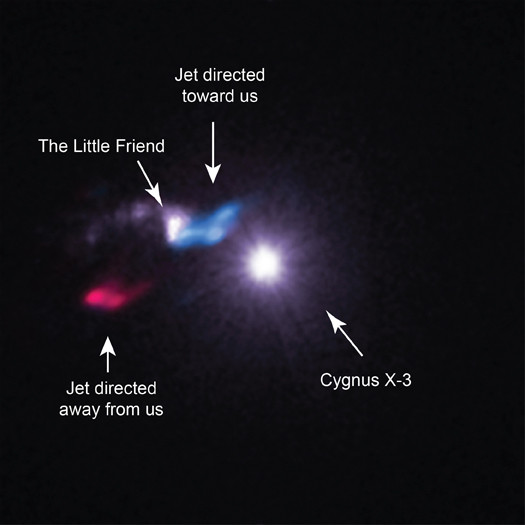Globule in space acts as mirror to reflect X-rays from star in death throes
The Bok globule is a small cloud that gives birth to stars, and is most distant of its kind to have been discovered.

A portrait of a cloud that is the birthplace of stars shows reflections of X-rays from Cygnus X-3, a binary system where a massive star is being destroyed by an object next to it, which could be a black hole or a neutron star.
The image was captured by NASA's Chandra X-ray Observatory and the Smithsonian's Submillimeter Array. The cloud is about 0.7 light-years in diameter and is close to Cygnus X-3. At 20,000 years from Earth, it is the most distant Bok globule yet observed.
The globule was initially thought to be as a source of X-rays itself, but it was later found to be a cloud of gas and dust that acts as a mirror to reflect X-rays from the nearby Cygnus X-3. It is thought to have a mass in the region of 2 to 24 times that of the Sun.
Little Friend gives birth to stars
The cloud gained an affectionate nickname from astronomers, given its size and proximity to the binary system.
"We nicknamed this object the Little Friend because it is a faint source of X-rays next to a very bright source that showed similar X-ray variations," says Michael McCollough of the Harvard-Smithsonian Center for Astrophysics in the US, who led the most recent study of the system.

Astronomers confirmed using radio telescopes in Hawaii to confirm that Little Friend is a Bok globule – a small, dense cloud where stars are born.
"Typically, astronomers study Bok globules by looking at the visible light they block or the radio emission they produce," says study co-author Lia Corrales of the Massachusetts Institute of Technology. "With the Little Friend, we can examine this interstellar cocoon in a new way using X-rays – the first time we have ever been able to do this with a Bok globule."
Origins of Cygnus X-3
Cygnus X-3 itself is thought to have originated in a region of the Milky Way where stars are still forming, in the spiral arms of the galaxy. But now Cygnus X-3 is outside the arms, posing a puzzle for astronomers.
"In some ways it's a surprise that we find Cygnus X-3 where we do," says study coauthor Michael Dunham of the Harvard-Smithsonian Center for Astrophysics and the State University of New York at Fredonia. "We realised something rather unusual needed to happen during its early years to send it on a wild ride."
The supernova that made the black hole or neutron star that is sucking the mass from Cygnus X-3 could have pushed the system away from its birthplace, the authors suggest. It must have been ejected from the spiral arm at a speed between 400,000 and 2 million mph, they calculate.
© Copyright IBTimes 2025. All rights reserved.






















